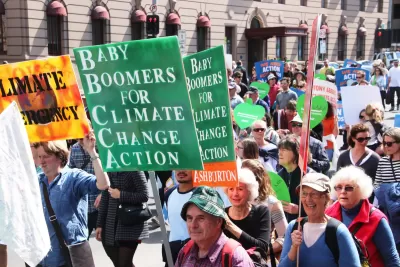The first baby Boomers turned 65 in 2011, and now the population of the United States has a growing number of residents over the age of 65. The country also has fewer people under the age of 14.

"The U.S. Census Bureau today released estimates showing the nation’s 65-and-older population has grown rapidly since 2010, driven by the aging of Baby Boomers born between 1946 and 1964," according to a press release from the U.S. Census Bureau.
"The 65-and-older population grew by over a third (34.2% or 13,787,044) during the past decade, and by 3.2% (1,688,924) from 2018 to 2019."
Also writing for the Census Bureau, Luke Rogers and Kristie Wilder follow up on the data with more insight about the implications of the aging of the U.S. population. Related to the increase in older Americans comes a decrease in Americans under the age of 14. "Over the last decade, the growth of the non-working-age (dependent) population – those aged 0 to 14 and 65 and older – has outpaced the growth of the working-age population," according to Rogers and Wilder.
Those statistics, when combined, mean a higher dependency ratio—more people at dependent ages than the number of people at working ages.
FULL STORY: 65 and Older Population Grows Rapidly as Baby Boomers Age

Alabama: Trump Terminates Settlements for Black Communities Harmed By Raw Sewage
Trump deemed the landmark civil rights agreement “illegal DEI and environmental justice policy.”

Study: Maui’s Plan to Convert Vacation Rentals to Long-Term Housing Could Cause Nearly $1 Billion Economic Loss
The plan would reduce visitor accommodation by 25% resulting in 1,900 jobs lost.

Planetizen Federal Action Tracker
A weekly monitor of how Trump’s orders and actions are impacting planners and planning in America.

Wind Energy on the Rise Despite Federal Policy Reversal
The Trump administration is revoking federal support for renewable energy, but demand for new projects continues unabated.

Passengers Flock to Caltrain After Electrification
The new electric trains are running faster and more reliably, leading to strong ridership growth on the Bay Area rail system.

Texas Churches Rally Behind ‘Yes in God’s Back Yard’ Legislation
Religious leaders want the state to reduce zoning regulations to streamline leasing church-owned land to housing developers.
Urban Design for Planners 1: Software Tools
This six-course series explores essential urban design concepts using open source software and equips planners with the tools they need to participate fully in the urban design process.
Planning for Universal Design
Learn the tools for implementing Universal Design in planning regulations.
Caltrans
Smith Gee Studio
Institute for Housing and Urban Development Studies (IHS)
City of Grandview
Harvard GSD Executive Education
Toledo-Lucas County Plan Commissions
Salt Lake City
NYU Wagner Graduate School of Public Service





























